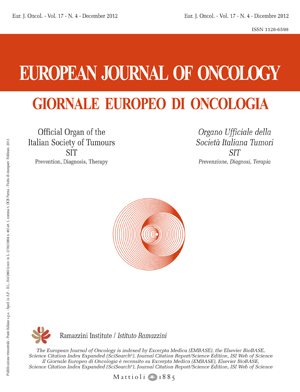Interferenti endocrini dalla ricerca alla sanità pubblica / Endocrine disrupters: from research to public health practice
Keywords:
Sindrome metabolica, fertilità, sicurezza alimentare, infanzia, sviluppo, Metabolic syndrome, fertility, food safety, childhood, developmentAbstract
Gli Interferenti Endocrini (IE) sono un vasto ed eterogeneo gruppo di sostanze, naturali e di sintesi, accomunate dalla capacità di alterare la funzionalità del sistema endocrino causando effetti avversi sulla salute di un organismo, oppure della sua progenie o di una (sotto)popolazione particolarmente vulnerabile. La salute riproduttiva, lo sviluppo prenatale ed infantile sono le fasi più suscettibili. Gli effetti specifici degli IE sono strettamente associati ai rispettivi meccanismi, ad esempio agonismo o antagonismo di recettori nucleari. Gli IE possono essere divisi in quattro grandi gruppi: contaminanti persistenti in grado di bioaccumulare in organismi animali e vegetali; pesticidi, biocidi e sostanze utilizzate in zootecnia; sostanze industriali largamente diffuse in prodotti di consumo come il bisfenolo A e gli ftalati, meno potenti dei contaminanti persistenti e pesticidi ma che danno luogo ad una esposizione diffusa e non sono ancora oggetto di piani di controllo consolidati; sostanze naturali come la micotossina zearalenone o componenti bioattive presenti nella dieta come i fitoestrogeni. Per molte patologie multifattoriali a base endocrina gli IE vanno visti come fattori di rischio prevenibili, tra gli esempi principali i disturbi della fertilità e la predisposizione alla sindrome metabolica e ad alcuni tipi di tumore. La ricerca indipendente è indispensabile per integrare ed aggiornare la valutazione del rischio attraverso la comprensione dei meccanismi, lo sviluppo di possibili biomarcatori per gli studi di popolazione nonché la identificazione di priorità ed obiettivi necessari per la gestione e comunicazione del rischio.Endocrine disrupters: from research to public health practice
An Endocrine Disrupter (ED) is an exogenous substance or a mixture, that alters function(s) of the endocrine system, causing adverse health effects in an intact organism, or its progeny, or particularly vulnerable (sub)populations. Reproductive health, prenatal and infant development are the most susceptible stages. EDs specific effects are closely associated with the respective mode of action, which can be very different e.g., nuclear receptor agonism or antagonism. EDs can be divided into four main groups: persistent pollutants that can bioaccumulate in animals and plants; pesticides, biocides and compounds used in animal husbandry; industrial chemicals widely used in consumer products such as bisphenol A and phthalates, less potent than persistent pollutants and pesticides, but with a more widespread exposure and still not adequately regulated; substances naturally occurring in diet such as the mycotoxin zearalenone or bioactive food components such as phytoestrogens. For many multifactorial endocrine-related diseases EDs should be considered as preventable risk factors; main examples are fertility disorders as well as predisposition to metabolic syndrome and some types of cancer. Independent research is essential to integrate and update risk assessment based on the mode of action understanding, the development of possible biomarkers for population studies as well as priorities and targets for risk management and communication.
Downloads
Published
Issue
Section
License
OPEN ACCESS
All the articles of the European Journal of Oncology and Environmental Health are published with open access under the CC-BY Creative Commons attribution license (the current version is CC-BY, version 4.0 http://creativecommons.org/licenses/by/4.0/). This means that the author(s) retain copyright, but the content is free to download, distribute and adapt for commercial or non-commercial purposes, given appropriate attribution to the original article.
The articles in the previous edition of the Journal (European Journal of Oncology) are made available online with open access under the CC-BY Creative Commons attribution license (the current version is CC-BY, version 4.0 http://creativecommons.org/licenses/by/4.0/).
Upon submission, author(s) grant the Journal the license to publish their original unpublished work within one year, and the non exclusive right to display, store, copy and reuse the content. The CC-BY Creative Commons attribution license enables anyone to use the publication freely, given appropriate attribution to the author(s) and citing the Journal as the original publisher. The CC-BY Creative Commons attribution license does not apply to third-party materials that display a copyright notice to prohibit copying. Unless the third-party content is also subject to a CC-BY Creative Commons attribution license, or an equally permissive license, the author(s) must comply with any third-party copyright notices.

